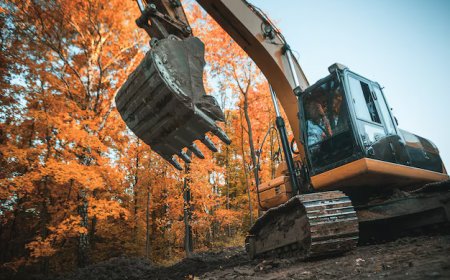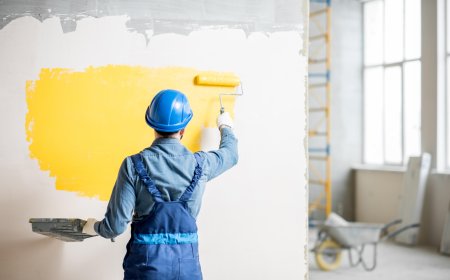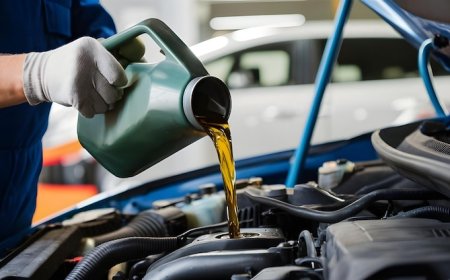The Car You Thought Was Worthless Might Be Worth a Fortune
Learn how a vehicle many people see as scrap can still hold value. Discover what makes a car profitable to a Used Car Buyer and what factors matter most.

Many people assume that once a car stops running or fails inspection, it is worth nothing. It might sit in a driveway, rusting and collecting dust. But the truth is, even old and broken vehicles can still hold real value. While the outside may look rough, what is under the bonnet or within the frame can still be useful.
The key is understanding what buyers and recyclers are looking for. Whether it is reusable parts, working electronics, or valuable metals, a vehicle that looks like junk could still bring in a solid amount of money.https://www.carremovalsydney.com.au/
What Makes an Old Car Valuable?
Not all vehicles are worth the same once they stop working, but there are many reasons why a so-called junk car can still have worth.
1. Parts That Still Work
Many cars have parts that continue to function even when the engine fails. Items like transmissions, alternators, starter motors, air conditioning compressors, and fuel pumps can still be pulled out and sold. Even small itemslike door handles or side mirrorsmight be in good shape.
Buyers look for working parts that match common models on the road. Mechanics and car owners often seek second-hand parts to repair their vehicles, so demand stays strong.
2. Metal Content
Most vehicles are made of a mix of metals. The frame usually contains steel, while parts of the body or engine might include aluminium, copper, or even rare metals like palladium in catalytic converters.
Steel recycling saves energyabout 75 percent less than making it from raw material. Because of this, scrap metal yards pay by weight. So even if a car does not have working parts, its materials alone can bring in money.
3. Vehicle Rarity
Older models, especially those not made anymore, can be valuable to collectors or car restorers. A broken-down car from the 1980s or 1990s might have rare pieces that are hard to find today. Even parts that seem minorlike switches or badgescan hold value.
How the Car Market Shapes Scrap Value
The price someone will pay for an old car often depends on more than just its condition. Outside factors can make a big difference.
-
Metal prices: When prices for steel, copper, or aluminium rise, scrap yards and wreckers often pay more.
-
Fuel economy trends: If fuel prices rise, smaller cars may become more popular, raising the demand for their parts.
-
Seasonal changes: Some car models are more useful in certain seasons. For example, parts for four-wheel drives might be in greater demand during winter.
All of these points show that even an unwanted car can become valuable under the right market conditions.
What Used Car Buyers Are Looking For
A Used Car Buyer usually checks for several key details before offering payment:
-
Make and model: Some car brands are more popular, so their parts are more sought after.
-
Age: While newer cars bring in more, older vehicles can still be useful if their parts are in demand.
-
Condition: A car that looks rough may still run, while one that appears fine could have a broken engine. Buyers check everything.
-
Weight: If nothing else, scrap metal buyers pay by weight. Larger vehicles usually fetch more.
These buyers often work with scrap yards, mechanics, and second-hand part resellers. By breaking down each vehicle into what can be reused or sold, they build a business from what others throw away.
A Place for Every Vehicle
Even if a car has been in a crash or flooded, some parts may still function. Airbags, wheels, side panels, and electronic controls often survive even when the rest of the vehicle does not. Because of this, it is always worth getting a second opinion before writing off a car completely.
Some companies focus on removing cars from streets and driveways. They take care of towing, paperwork, and de-registration. In doing so, they not only help owners clear space but also feed parts back into the market. For example, a service in New South Wales provides this type of work. By handling the car removal and processing in one go, they help Used Car Buyer services access more parts, while giving everyday people a reason to part with unused vehicles.
Myths That Keep Cars Sitting Idle
Some people keep old cars for years because they believe certain myths. These often lead to missed chances to earn money or free up space:
-
No one wants a car that does not run: Not true. Many buyers only need the parts or the metal.
-
It costs too much to get rid of: Some companies remove vehicles at no cost, especially if they can reuse the car.
-
It is better to wait until metal prices go up: Prices rise and fall, but keeping a car too long leads to more rust and less return.
By moving quickly and reaching out to the right buyer, owners can avoid these problems and gain something in return.
How to Know When It Is Time to Sell
There are a few signs that it might be time to part with an older vehicle:
-
The cost to fix it is higher than its worth
-
It has been parked for months or years without use
-
Parts are becoming hard to find or too costly
-
You need the space more than the car
Selling does not always mean saying goodbye to the whole vehicle either. Some owners choose to sell parts separately, like wheels or batteries, while keeping the rest.
What You Can Expect When You Sell
If you decide to sell, the process usually includes:
-
A quote based on details you provide
-
A pickup time or drop-off arrangement
-
Signing papers to transfer ownership
-
Receiving payment, usually by cash or bank transfer
Buyers often ask for proof of identity and ownership, so having those ready helps make things smoother.
Final Thoughts
A car that no longer runs can still be useful. With the right knowledge, you can turn what feels like a burden into something with worth. From parts to metals, from rare components to standard pieces, every car has something left to give.
The process is built on careful checks, safety, and re-use. It helps clear yards, reduce waste, and support industries that keep other vehicles moving. So before calling that old car worthless, it may be wise to speak to someone who sees more in itsomeone who looks beyond rust and sees real potential.




































